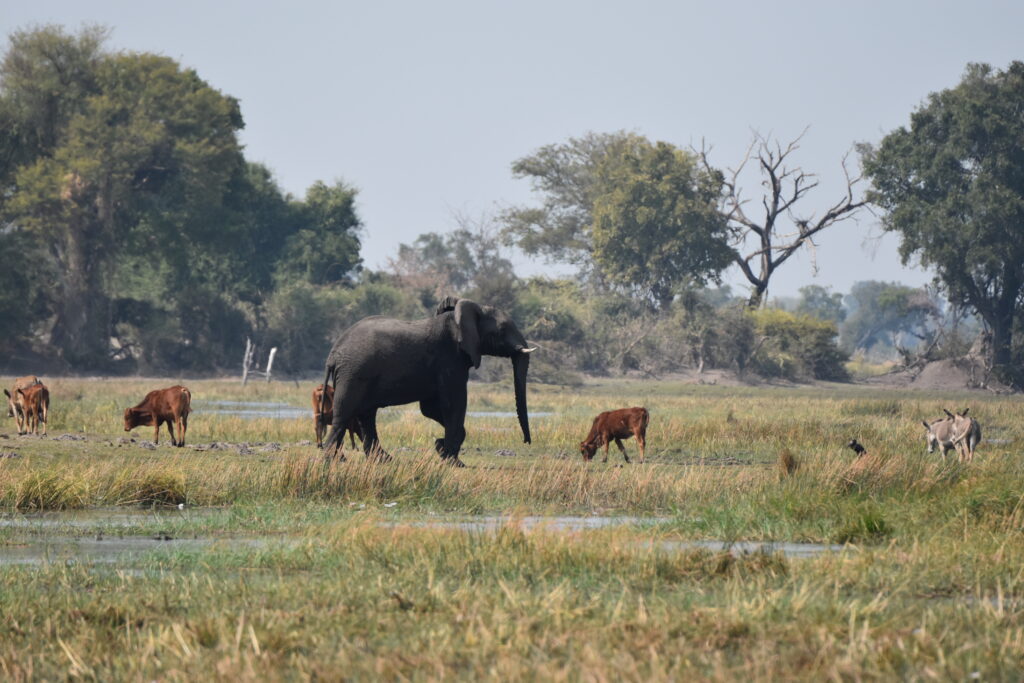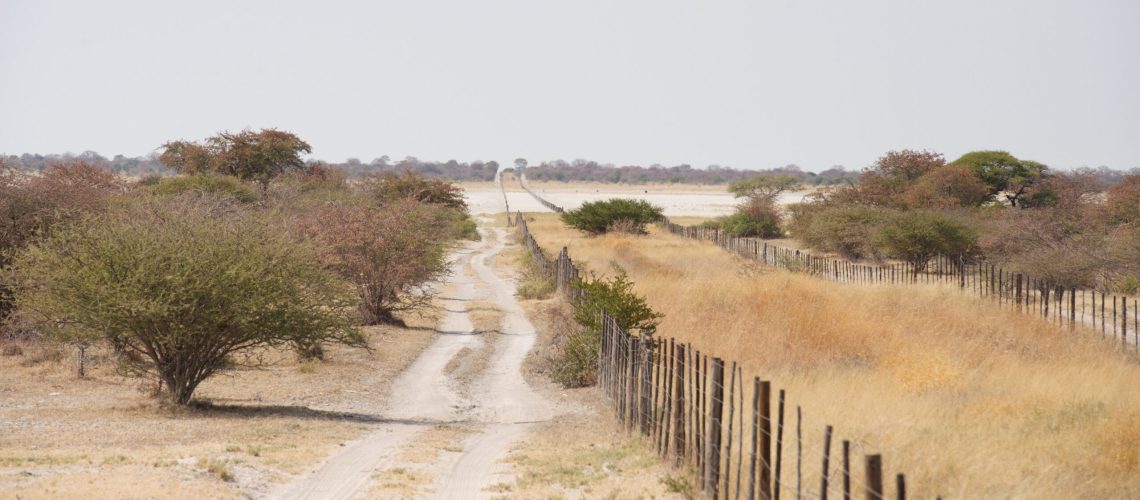Guest Post by Coby McDonald, 2022-2023 Sustainability Leadership Fellow, and Postdoctoral Fellow in the Department of Microbiology, Immunology, and Pathology and Department of Biology at Colorado State University
If you’re lucky enough to visit the Okavango Delta, an UNESCO World Heritage Site and key wetland habitat in southern Africa, chances are you’ll start your journey in Maun, Botswana. On your way to the delta, you’ll pass a fence. It’s an unassuming fence of wire and weathered, wooden posts. If you’re not paying attention, you might miss it entirely. But this fence, and others just like it, could be the main barrier to the success of the largest transboundary conservation area in the world.
Fencing in southern Africa is not new. Initially a colonial era implementation to prevent disease transmission from wildlife to cattle, a maze-like network of fences thousands of kilometers long now exists across the region. These ‘veterinary cordon fences’ vary in strength and construction, but they are unified in effect. Sometimes hastily erected in response to disease outbreaks and with political rather than environmental considerations, they disrupt migratory routes and access to seasonal grazing and water sources for pastoralists and wildlife alike.
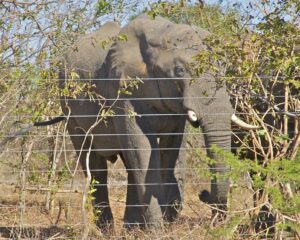
The utility and cost-effectiveness of veterinary cordon fences in preventing disease transmission have long been debated. Even the strongest fence can be cut or trampled. Key diseases of concern can increasingly be managed in other ways, and one of the most lethal, rinderpest, has been globally eradicated thanks to advances in veterinary medicine and vaccine technology.
Still, the fences remain. In Botswana, continued reliance on fences is driven less by scientific best practices than by strict European Union (EU) import regulations and subsidy of one industry: beef cattle production. Although cattle production accounts for approximately 3% of Botswana’s GDP, agricultural development policy in the country aims to increase this percentage by prioritizing access to lucrative international markets. Paradoxically, prioritizing EU market access undervalues the wildlife tourism sector, which contributes more than 10% to the GDP.
That’s because there’s one problem with accessing these export markets. Foot and mouth disease (FMD), a contagious viral disease of cloven-hooved animals like cattle, is endemic in Botswana, as it is in much of the Global South. Although FMD does not infect humans, it is contagious in cattle. Vaccination against FMD is costly because vaccines must target specific viral strains, of which there are many. This has led to a geographic disease control approach focused instead on complete eradication of the virus and official FMD status listing for each country.
Maintaining complete geographic elimination and the gold standard status of “FMD free without vaccination” is difficult with such a contagious disease. In countries that maintain unvaccinated, FMD-free herds, infection is a constant threat and uncontrolled outbreaks can lead to culling of hundreds of thousands of animals and economic losses in the billions. As such, these countries—mostly high-income countries in North America and Europe—do not import cattle or fresh beef products from regions that have not achieved an unvaccinated, FMD-free status.
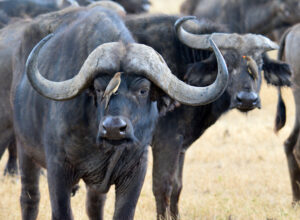
Unfortunately, achieving this status is infeasible in regions where FMD virus circulates in wildlife. In southern Africa, Cape buffalo are the main reservoir of FMD, and individuals may remain persistently infected for life. Since the arrival of pastoralists to the region, cattle and wildlife have coexisted for more than 1,000 years, and cross-species FMD transmission has likely occurred since the virus evolved centuries ago. Attaining FMD-free status without vaccination, and in turn access to the most profitable EU markets, has required a complete separation of domestic and wild animals that normally coexist. This is what Botswana’s fences are meant to achieve.
Today, Botswana exports half of its beef to Europe, but this national success comes at great cost. Veterinary cordon fences effectively bisect the country. While southern cattle producers enjoy FMD-free market access, northern producers and wildlife are left on the wrong side of the fence. Migratory corridors are disrupted to such an extent that wildebeest and hartebeest populations have declined ten-fold in less than three decades. Whereas some populations are declining, others are trapped in areas too small to support them. In the eastern panhandle of the Okavango Delta, an area roughly the size of Yellowstone National Park, more than 15,000 elephants coexist with 15,000 people. Bordered by a double-cordoned fence near the Namibian border to the north, the Northern Buffalo Fence to the south and east, and the Okavango River to the west, the region is too small to sustain such a large elephant population, which has led to increasing human-wildlife conflict.
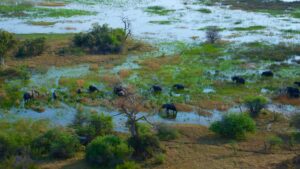
To facilitate both socioeconomic wellbeing and wildlife conservation in southern Africa, Botswana, Angola, Namibia, Zambia, and Zimbabwe formally established the Kavango Zambezi Transfrontier Conservation Area (KAZA) in 2011. KAZA encompasses over 500,000 square kilometers of both protected and unprotected land in an attempt to preserve resources and wildlife migration routes that ignore political borders. Botswana and the other founding countries are unlikely to dismantle all of their fencing infrastructure. But for KAZA to succeed, key stretches of fence must be removed to reopen historic wildlife corridors spanning the five countries involved.
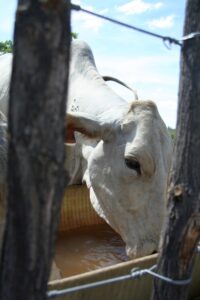
Ongoing ecotourism development within KAZA will likely improve livelihoods and increase the already sizeable contribution of the sector to Botswana’s GDP. However, with 70% of Botswanans relying on subsistence agriculture and significant cattle production occurring in northern Botswana’s KAZA region, which will never be FMD-free, alternative revenue streams are needed. Enter commodity-based trade of beef (CBT), an approach developed by a consortium of international and local veterinarians and other scientists collaborating under the auspices of the Animal and Human Health for the Environment And Development (AHEAD) program. CBT envisions regional and inter-regional beef trade based not on geographical FMD status, but on appropriate sanitary measures.
It turns out that while FMD is contagious, it’s also easily inactivated. By applying food safety and disease risk management procedures in parallel, the risk of FMD transmission from exported beef products is negligible. While FMD-free regions like the EU are unlikely to acknowledge these non-geographic management approaches, such a model could facilitate trade between countries that have similar FMD statuses.
Crucially, CBT is now allowing cattle producers in KAZA access to previously untapped export markets via vaccination, quarantine, and appropriate meat processing standards. Eliminating reliance on physically separating wildlife and cattle for trade purposes can in turn eliminate the need for many of the fences, or at least key segments of them. Such a return to environmentally sustainable land-use practices, where cattle and wildlife continue to coexist without the devastating ecological and economic costs of vast cordon fences, could be key to conserving the largest inland delta in the world.
